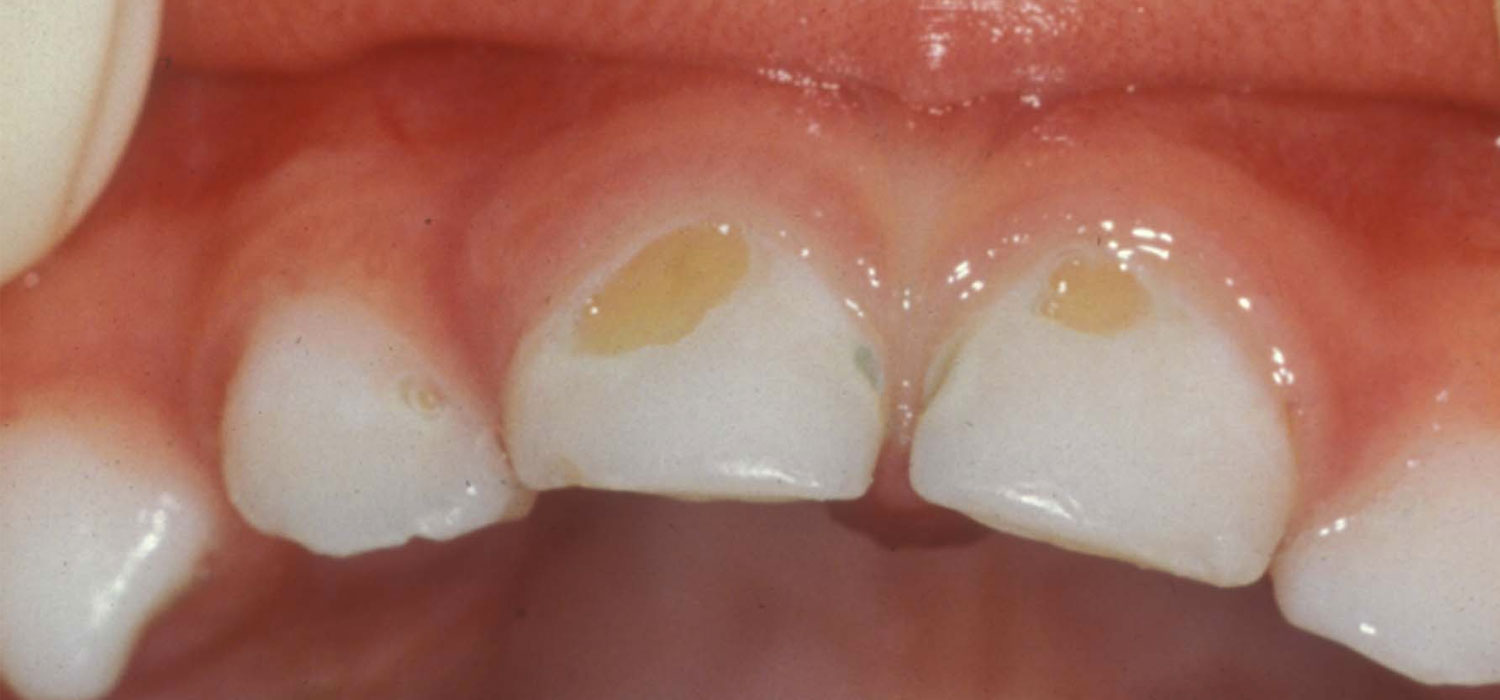
ECC is short for early childhood caries (or cavities), which is an especially damaging form of the dental decay, which impacts the primary teeth of preschoolers.
The prevalence of ECC in pre-school children in urban areas of Canada is six to eight percent, but in disadvantaged populations such as the Inuit of the Northwest Territories, 64 percent of 4-year-olds are affected. ECC is preventable, yet it is more common than other preventable childhood illnesses such as mumps and measles.
How common is dental decay in children?
One of the most prevalent disorders of childhood, dental decay is five times as common as asthma and seven times as common as hay fever. It is caused by bacterial infection and impacts 60 percent of all 5 to 17 year-olds.
What is baby bottle caries?
 Baby bottle tooth decay is caused by the frequent and long-term exposure of a child’s teeth to liquids containing sugars. Among these liquids are milk, formula, fruit juice, sodas and other sweetened drinks. The sugars in these liquids pool around the infant’s teeth and gums, feeding the bacteria that cause plaque.
Baby bottle tooth decay is caused by the frequent and long-term exposure of a child’s teeth to liquids containing sugars. Among these liquids are milk, formula, fruit juice, sodas and other sweetened drinks. The sugars in these liquids pool around the infant’s teeth and gums, feeding the bacteria that cause plaque.
To prevent baby bottle tooth decay in the teeth of very young children, don’t let your baby fall asleep with a bottle of juice or milk in his/her mouth. Also be sure and wipe the baby’s teeth and gums with a clean, damp cloth after feeding. Preventing oral disease in children starts with good dental care habits. Children are really never too young to learn how to care for their teeth. Children should have their teeth brushed or be helped to brush their teeth at least twice a day.
When should I bring my children in for a visit/consultation /assessment?
Children should also be seen by the dentist twice a year. The Canadian Dental Association encourages an assessment visit with the dentist within 6 months of them getting their first tooth or by one year of age.
What is Rampant caries?
Rampant caries is a suddenly appearing, rapidly burrowing type of caries resulting in early pulp involvement, in which more than 10 new lesions appear every year on healthy teeth surfaces which are generally immune to caries.
There are 3 types of Rampant caries:
- Nursing bottle rampant caries: Nursing bottle rampant caries is very common in infants.
- Adolescent rampant caries: When rampant caries occurs in adolescent age, it is called adolescent rampant caries. During adolescence, some children habitually put chocolates, toffees and biscuits in their mouth and go to sleep.[1] Such patients suffer from adolescent rampant caries. The adolescent rampant caries has the same pattern as that of nursing bottle caries.
- Xerostomia-induced rampant caries: Is often associated with salivary gland hypofunction due to irradiation of the head and neck region.
If you’re a new parent and want to be proactive about your child’s oral health, please give Sunrise Village Dental a call at (604) 253-2433 or swing by our dental office located on Hastings St. in Vancouver, BC.

Expect me to swing by the office this weekend. I do want to be proactive in my child’s oral health.
Our dental office in Vancouver, BC is open on Saturday from 10am – 6pm and closed on Sunday. We’ll be waiting for you Susan 🙂